Would you like to see this in-game?
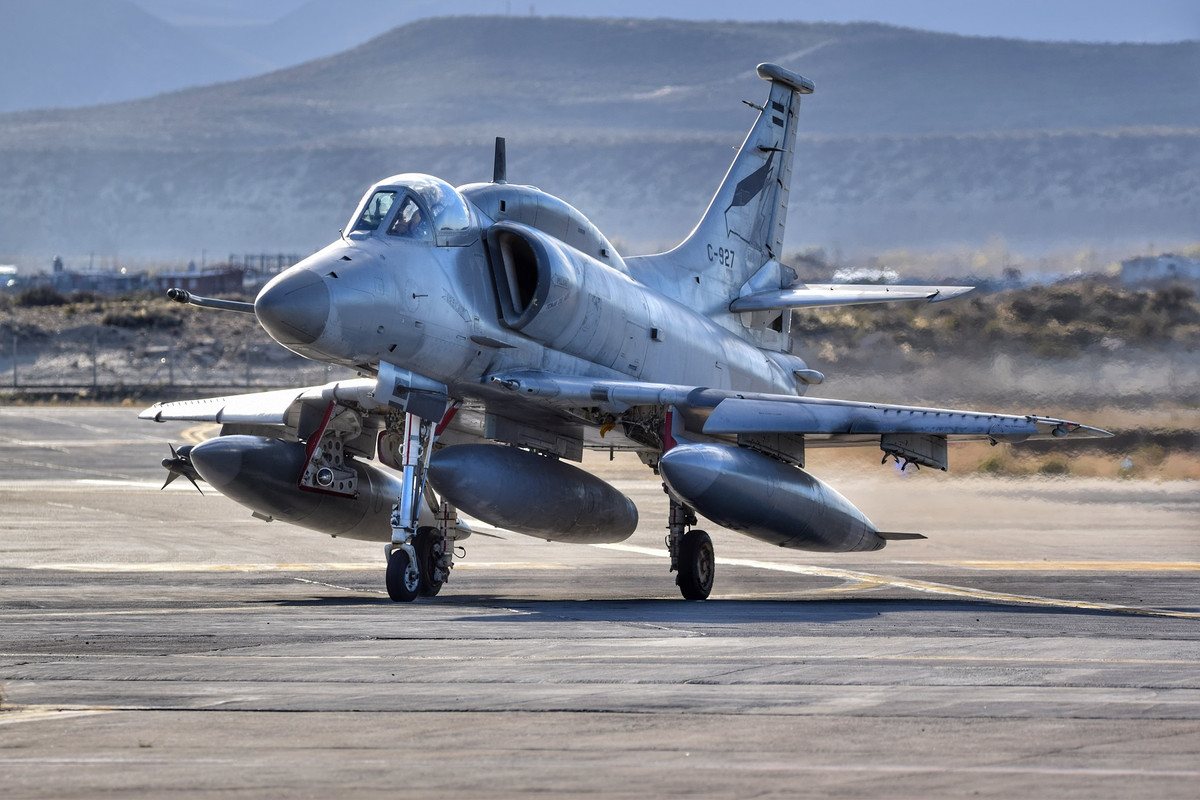
An Introduction:
Hello Guys!, today i bring to you the A-4AR, probably one of the last versions of the A-4 Skyhawk to ever see service, this little plane has a bit more than what meets the eye, as it was heavily modified to meet certain modern requirements (much like the Super Skyhawk and the Kahu projects that were done at the same time or previous to it, this Skyhawk saw the replacement of its radar, engine and the integration of modern countermeasures, avionics and some armament. In this suggestion we are going to explore this aircraft “from wing to wing” going over all its changes.
History & Service
Where it all began…
The life of the A-4 Skyhawk in Argentina dates back to the late 60s, the Argentine Air Force would be the first user in the region and among the first export customers of the aircraft, the original A-4B (or A-4P as its known by the US). The Original Bravos would mean a great in crease of capabilities, an example of this was the Air-Air Refueling capacity, a first for the FAA.

The first batch of A-4Ps while on the US
The FAA would end up incorporating a second batch, after the total retirement of the Gloster Meteors and anticipating the possible retirement of the Sabres, by this time, the metallic livery was diched and the more well known darker colors were adopted.
Conflicts and embargos…
As tensions were on the rise with neighboring Chile, the FAA would incorporate a second A-4 model, this time the aircraft were standard A-4C bought as were from the US, given the desperation of the possible conflict, this units were rapidly put on operational status, they were in some aspects more capable than the A-4Ps, the C had better navigational equipment, more hardpoints and could even carry Air-Air missiles, something that the Ps lacked.

A-4C(s) on exercises
After negotiations and even Papal intervention, the crisis was resolved, but things wouldn’t remain calm, as years later another crisis erupted in war, the 1982 Malvinas conflict. In this conflict the A-4s played a significant role striking British land and Sea targets, despite the squadrons suffering notable losses, the A-4s managed to inflict significant damage to the British fleet, sinking and damaging various vessels.
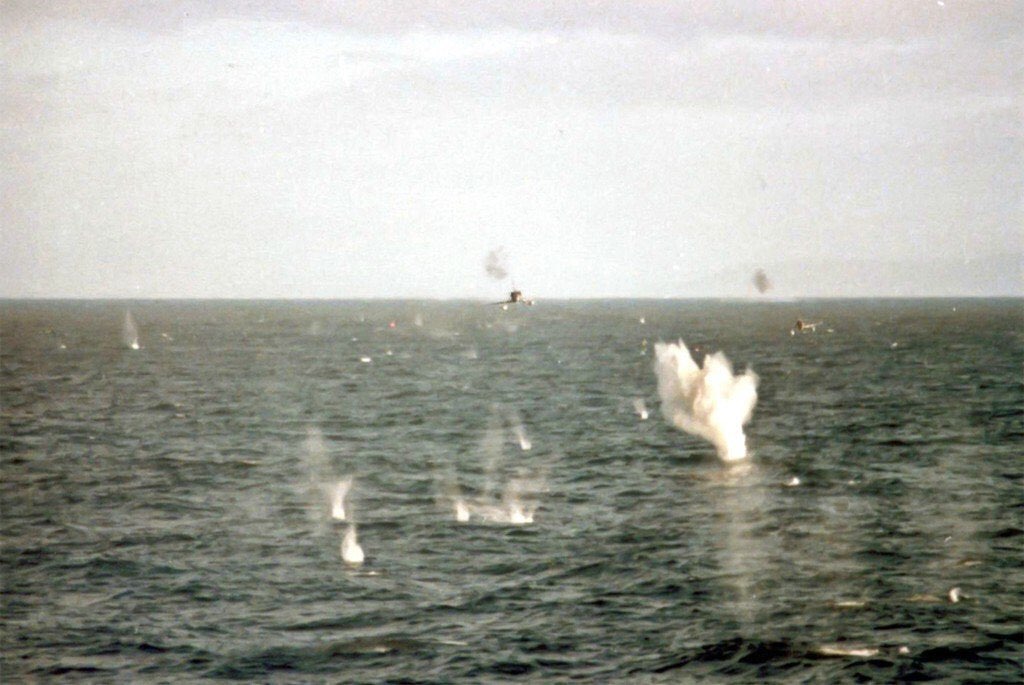
Famous Picture taken from HMS Coventry during a low level attack by A-4P(s)
After the war the C/P squadrons merged, its original logistical chain was cut by the embargos but saved by Israel (who operated the type and had been a supplier during the war), by this time the age and standards of the fleet were starting to concern the FAA, who in 1986 submitted for a replacement, given the fact that the old examples did not comply with the modern standards to carry their missions. During the rest of the 80s, the FAA would “explore” export options in Russia and China, but given their massively different logistical chain and support for it, they were discarded.
Scooter my old friend…
As relations between the US and Argentina came back to a good spectrum, negotiations for the purchase of a replacement started, the FAA would evaluate various models but the one that would stay was the A-4M, the last installment of the Skyhawk, the US would offer a first deal of 50 airframes “as were” but this was rejected. In the end, a deal for 36 modernized units was signed in 1994 for a total of 365 million dollars, this included the aircraft, their modernization, simulators, training and spares.

An un-upgraded A-4M with Argentine serials while on test flight on the US
The aircraft were selected among the newest A-4Ms that had been recently decommissioned from service, the initial aircraft were going to be modernized in the US, while a large number were going to be done at FMA, now under the control of Lockheed Martin (LAMAASA). Changes and upgrades contemplated:
-
Overhaul of Airframes and Engines
-
Addition of the AN/APG-66V2(ARG-1) radar
-
Addition of Jammers
-
Modern Navigation systems
-
Chaff and Flare dispensers
-
Homologation of modern armament (AIM-9L/M, AGM-65, etc)
The new A-4AR was “a world ahead” its older brothers in Argentine service, as the New addition offered all the capabilities the P & C offered, and added a lot more, from Chaff and Flares, Jamming equipment, IFF, capacity to use guided munitions, modern GPS and navigation equipment. The aircraft entered service in 1997 when they first arrived to Argentina, where they replaced the combined fleet of A-4P/C in the “Grupo 5 de Caza”, they service is not very noteworthy, as their only deployment involving other nations were in exercises and providing protection during the G20 summit, to this very day the A-4AR still operating in the FAA.
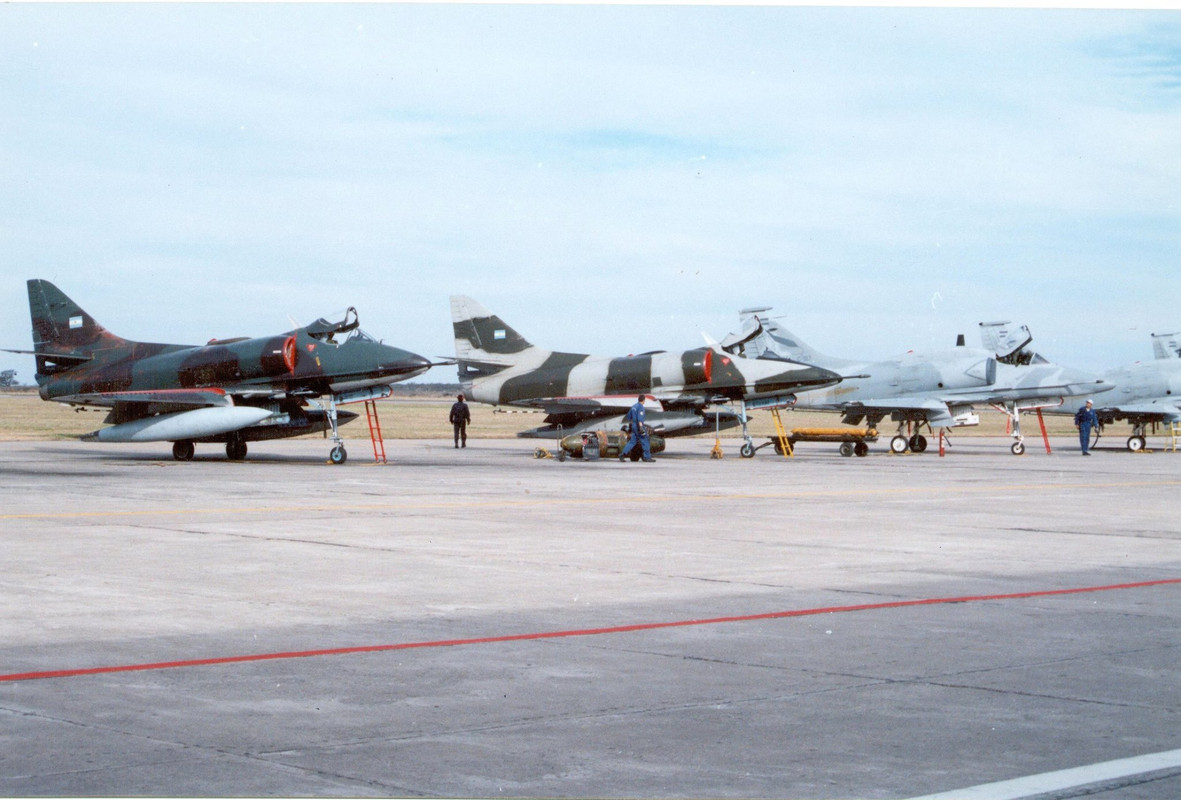
Pictured the A-4AR(s) along an A-4C and A-4P
Specifications
Spoiler
Crew: 1
Dimensions:
Length: 12.76 m
Wingspan: 8.22 m
Height: 4.74 m
Wing Surface: 79.24 m²
Weight:
Empty weight: 4870 kg
Max takeoff weight: 11.130 kg
Engine: Curtiss Wright J-65-W-20
Power: 8400 Lbf of thrust
Performance:
Max speed: 1080 Km/h
Never Exceeded speed: 1230 K/hm
Service ceiling: 12880 m
Climb-rate: 42 m/s
Armament:
Internal Weapons:
×2 Colt Mk.12 20mm cannons.
Suspended Armament: (5 Pylons, up to 4500kg)
- General Purpose bombs: 115kg/125kg/250kg/etc (Mk.82, BK/BR-250, Mk.17, IMI 115)
- Aerial Rockets: FFAR/ZUNI
- Air-Air Missiles: Shafrir 2 (placeholder), AIM-9L/M (up to 4 of them)
- Others: AGM-65 (homologated in the US, but not purchased), DARDO standoff Bomb (tested)
Miscellaneous:
- RWR
- Ballistic computer
- Chaff/Flares
Pictures:
Spoiler

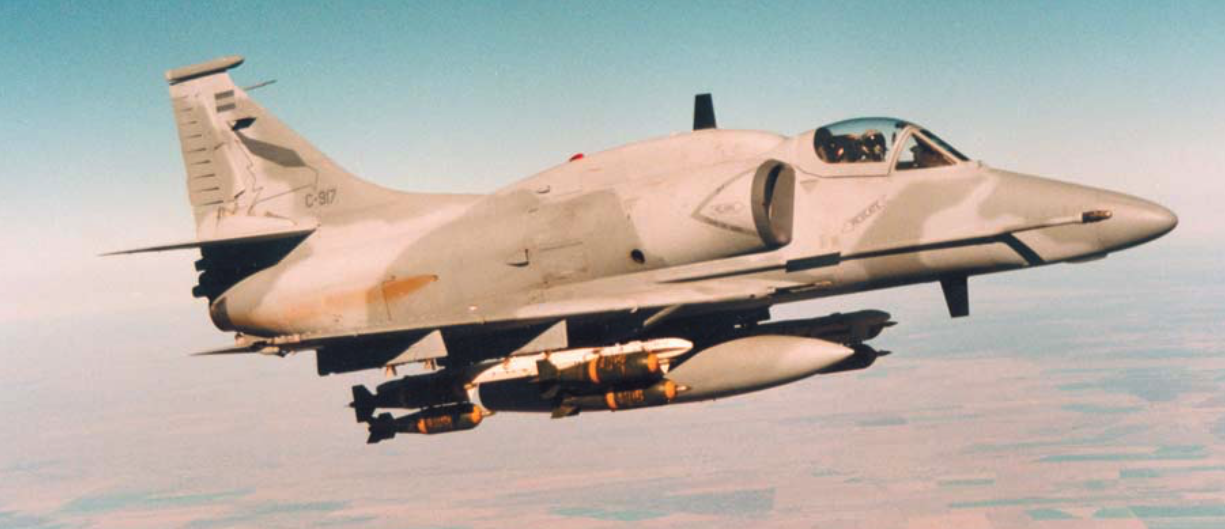
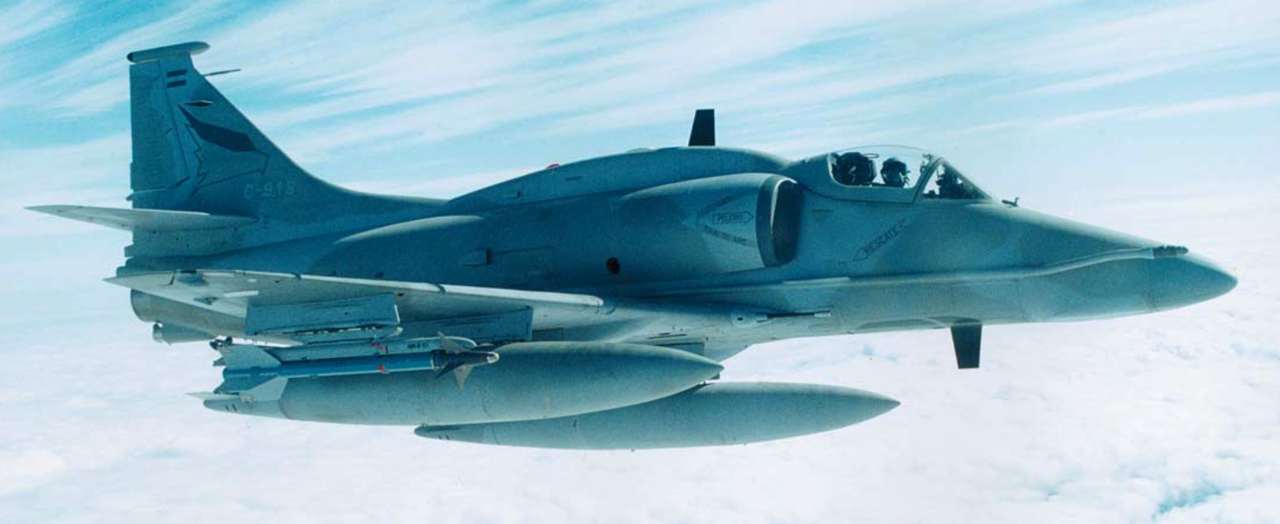



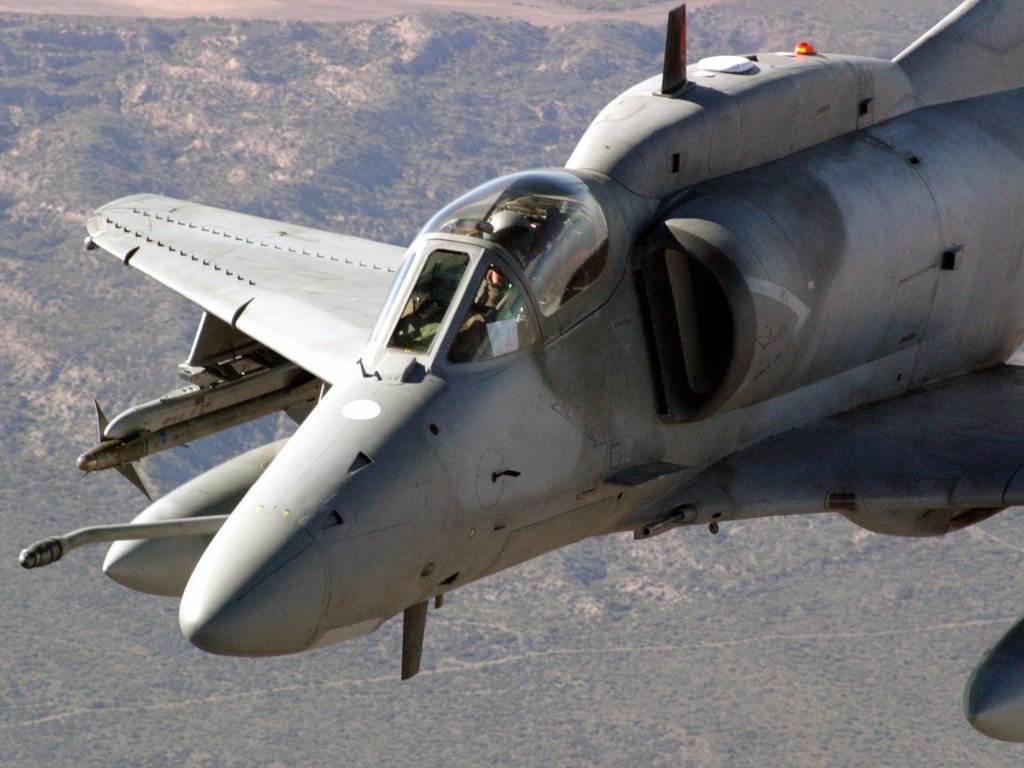
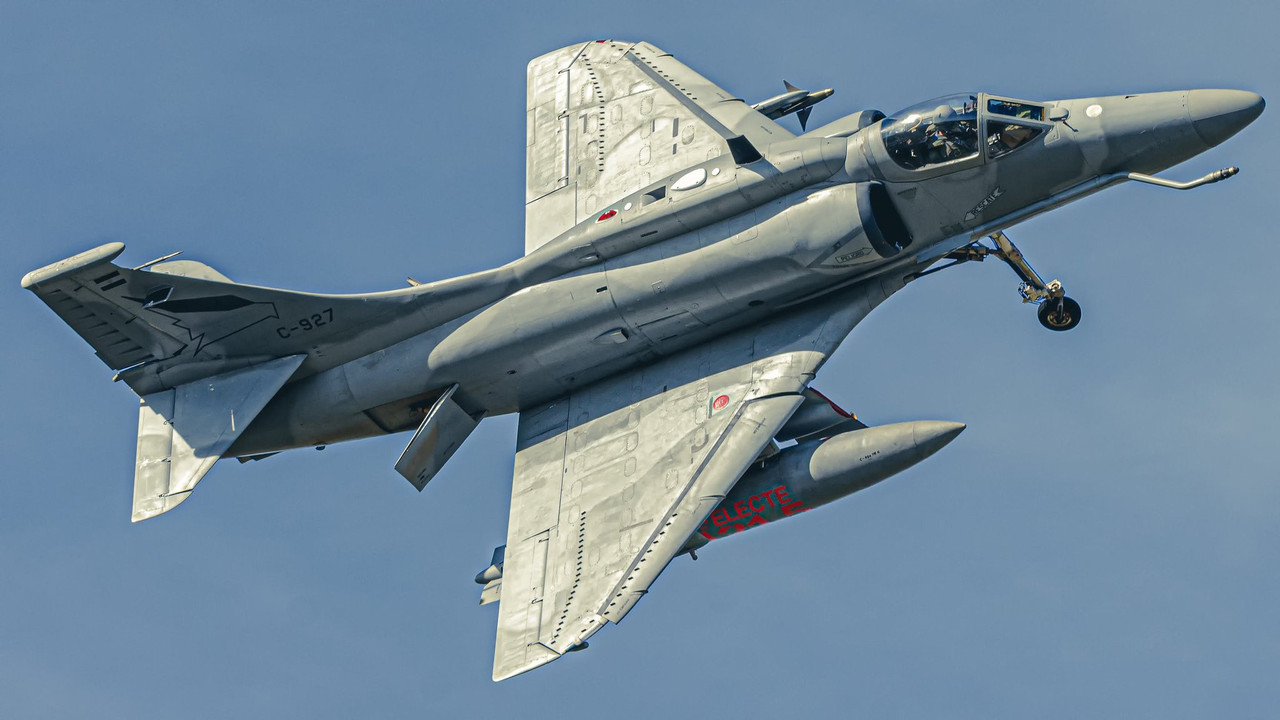


Sources:
Spoiler
Books/Magazines
ALAS Numero 4 “A-4 Skyhawk”
Aeroespacio Magazine
ARES Magazine
Sites:
Historias de Aviones: El A-4AR en la FAA. Por Hernan Longoni
LM A-4AR Fightinghawk :: Militar Argentino :: Blog
A-4AR Fighting Hawk
Douglas A-4AR
Lockheed Martin A-4AR Fightinghawk - Wikipedia
Todo sobre el A-4 Skyhawk | Zona Militar



















